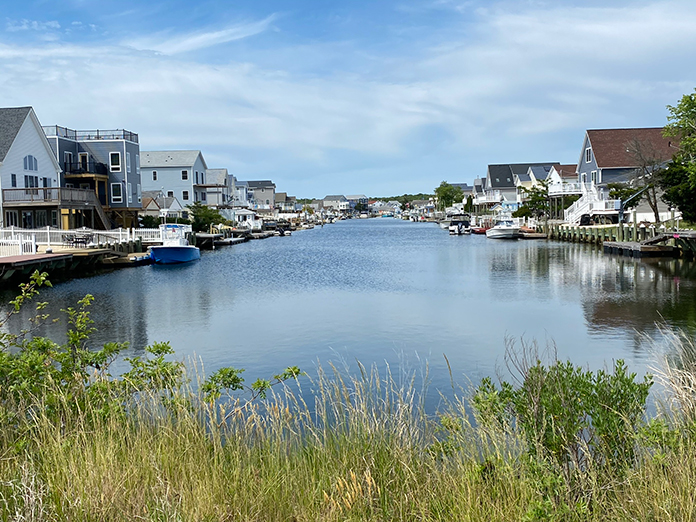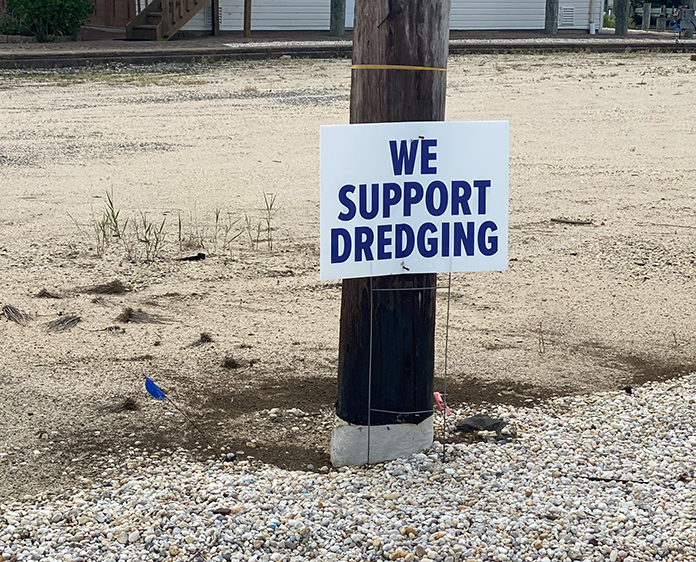
LITTLE EGG HARBOR – Even before Superstorm Sandy devastated the Jersey Shore, many Little Egg Harbor residents found their lagoons clogged with sediment, sand, and muck.
After Sandy, the horror show intensified for those who docked their boats at home. They worried about damage to their vessels – and had difficulties navigating them out to the bay.
Dredging represented the obvious solution, albeit an expensive one for homeowners to consider on their own. And, then there was also the issue of red tape and securing the proper permits.
“The residents of Osborn Island actually tried to start a dredging project on their own five years ago,” shared Little Egg Harbor Township Chief Financial Officer Rodney Haines. “They found the estimates were going to be more than they could come up with at a single time. They also did not have an organization that could take a loan out big enough to pay for it.”
According to Haines, a group of Osborn Island property owners approached the township and asked for help. Thus began the birth of Little Egg Harbor’s dredging project for its waterfront homeowners.

The concept was simplistic and genius at the same time. Little Egg Township officials agreed to take out a bond for the work and coordinate the dredging project in phases. Homeowners whose properties touched lagoons would receive special assessments payable over ten years.
“The cost to the town is really nothing in the end,” Haines said. “Each project is a different amount of money, depending on the amount of material that needs to be removed. The special assessment is then divided equally among the number of properties in each section.”
Affected homeowners are all presented with the opportunity to vote for or against the dredging project when it comes due in their neighborhood. However, not everyone who lives on the water has a boat or feels impacted by the shallow lagoons.
Proponents of the project assert that dredging increases property values. Others feel the cost was insignificant when compared with what it would do for their community.
Dredging on Osborn Island began in 2018 and resulted in special assessments for 327 properties. Although the project was completed in 2019, the special assessment didn’t start until 2021. Homeowners each have up to ten years to pay $5,056, representative of their individual share.
“Part of the reason we held off was because of the pandemic,” Haines explained. “We actually held off on selling bonds because the pandemic affected the bond interest rates. We waited and got the residents a good interest rate.”
Waterfront homeowners on Mystic Island east of Radio Road saw 524 properties benefiting from the project. Their special assessments came in at $4,845 per property.
Mystic Island resident Dave Silva voted in favor of the project. He has a jet boat and didn’t have any problems going out even before dredging was completed.
“From my standpoint, it isn’t just that it adds to the value on my home,” shared Silva. “People buy on a lagoon to get water access and I want everyone to enjoy the water. For me, it was the right thing to do as part of my civic duty.”

The second readings of two ordinances on the township’s governing body’s agenda pertain to continuing the dredging project. The Mystic Island west of Radio Road dredging project requires approval of an $8,550,000 bond; the Atlantis section needs appropriation of a $1,525,000 bond.
“The estimates are that the Mystic Island West special assessment will be between $8,000-$9,000,” said Haines. “At Atlantis, we’re expecting to be around $11,000 or $12,000.”
The cost comes in higher in these areas because there are more materials to be removed. The dredger also needs to dispose of the materials, which can involve higher trucking expenses as well.
The special assessment isn’t just higher in the Atlantis section because there are more materials to remove. Only 134 homes are on the water and expected to share the cost.
“We did poll each of the sections and will only proceed if there is a favorable vote,” Haines shared. “However, the law basically says that if the town determines that a project like this would be in the best interests of residents, the town can do special assessment projects.”







